Moskolonel
6 years agoLegend
WW2 girls
Hey! We have all followed the controversy of women in BFV and i create this post to give new examples putting an end to the controversy of detractors. Although uncommon there have been women, russia...
Lyudmila Pavlichenko
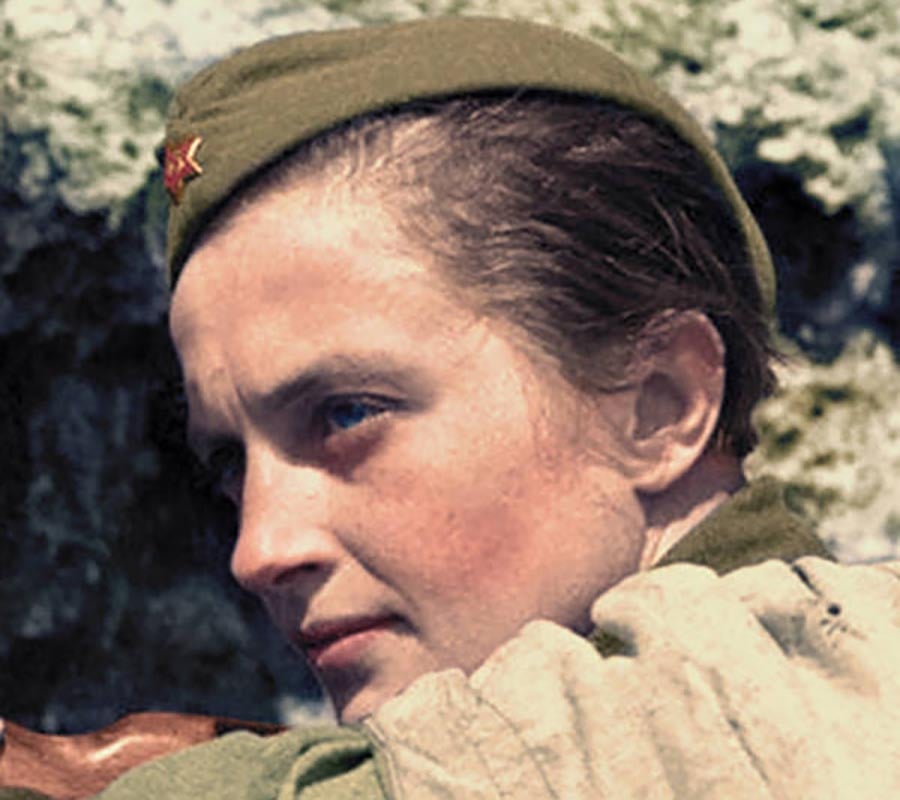
Imagine a Soviet sniper so deadly that the Germans addressed her over a loudspeaker, urging her to defect and join their ranks as an officer. That was Lyudmila Pavlichenko.
A former student of Kiev University, at the age of 14 Pavlichenko worked at a munitions factory as a metal grinder, and took up shooting soon after. When the war began, Pavlichenko wanted to fight for her country.
The army initially refused to enlist her to any position other than a nurse, even after she showed them her marksman certificate and a sharpshooter badge. They finally handed her a rifle and gave her an “audition,” which she passed with flying colors.
Pavlichenko had 309 confirmed kills during WWII – 36 of which were highly decorated German snipers. This figure makes her one of the top military snipers of all time.
Countless injures and shell shock didn’t stop her; in fact, she was only removed from active duty after taking mortar shell shrapnel to the face. The Soviets then decided they should remove Pavlichenko from danger and use her to train other snipers.
In spite of her obvious achievements, she still faced sexism from the press. While visiting the United States in 1942, women reporters continually asked her about the lack of style in her uniform, as well as her hair and makeup habits.
She put them in their place. “I wear my uniform with honor,” Pavlichenko said. “It has the Order of Lenin on it. It has been covered with blood in battle. It is plain to see that with American women what is important is whether they wear silk underwear under their uniforms. What the uniform stands for, they have yet to learn.”
Back home in Russia, she was decorated with many awards, including the Gold Star Medal (the highest distinction the country can give) and the title ‘Hero of the Soviet Union,’ and promoted to major. Later, she finished her college education at Kiev University and became a historian.
More info on wiki 🙂:
Hey here an other power girl!
Nancy Wake:
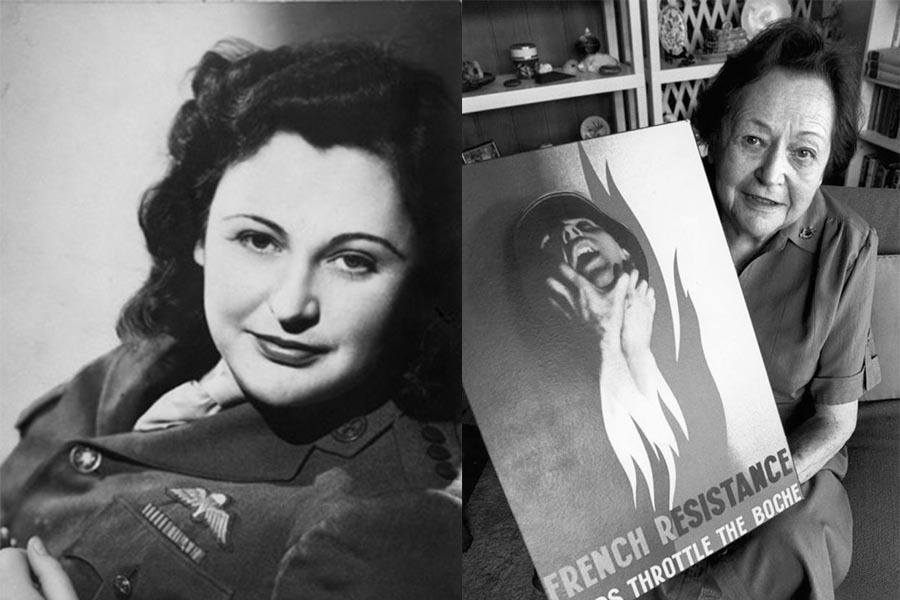
The Gestapo called her the “White Mouse” for her ability to elude capture. For a time, Germany considered her the most wanted woman in the country. Meet Nancy Wake.
Wake, the wife of a wealthy Frenchman, was the most decorated woman of the Allied forces. During her early days in the Resistance, Wake spent her time smuggling men out of France and transporting falsified documents and contraband supplies. While at one point captured and interrogated for several days, Wake never once gave up any secrets.
After escaping in 1943 to Britain, Wake joined the Special Operations Executive, an agency of British intelligence. After being trained in skydiving and weapons, she was dropped back into France as an official British spy.
Wake would go on to lead 7,000 Maquis guerilla troops, blowing up Nazi buildings and sabotaging vehicles and supplies. She once killed an SS Sentry with her bare hands.
Not losing her * with age, an 89-year-old Nancy Wake said, “Somebody once asked me, ‘Have you ever been afraid?’ … Hah! I’ve never been afraid in my life.”
Here more info on wiki about this girl of WWII:
Source: Wikipedia
Another power woman which I think belong in this topic as her music is also played in BFV. Is Vera Lynn.
She did not fight war with a gun bit gave an important support by singing her songs and visiting soldiers during WWII.
As she turned 103 in March a short video made by someone to honor her.
Vera Lynn In this link a clip custom made for Vera Lynn.
Edit* Adjusted link Wikipedia
Hey an other one:
Jacqueline Cochran
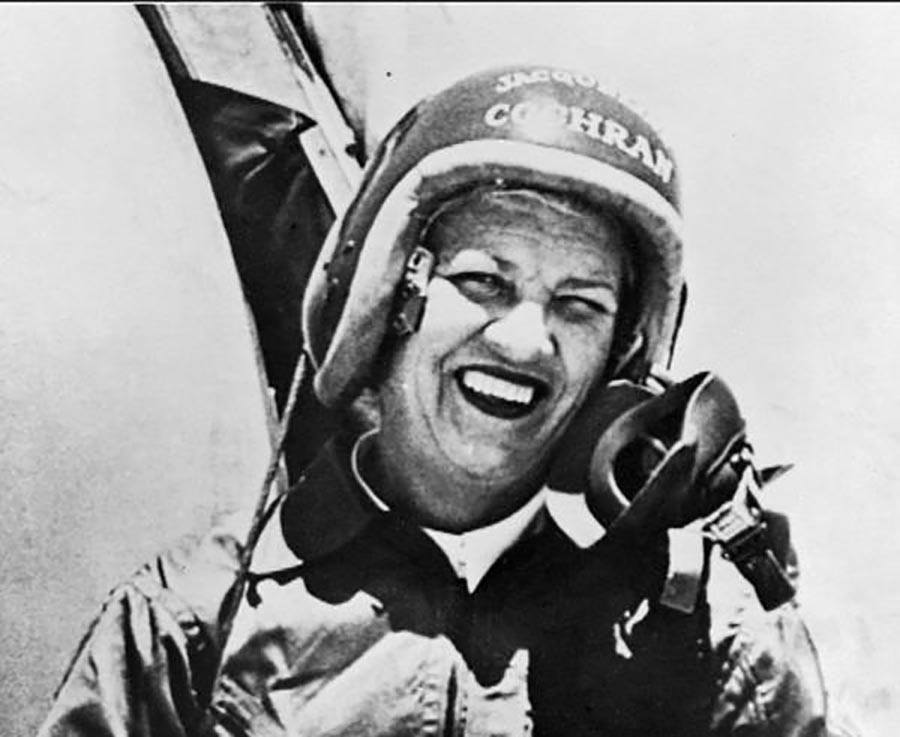
No stranger to hard work, Jacqueline Cochran spent her childhood working in a Georgia cotton mill starting at age six. As a teen, she was hired to sweep the floors of a beauty shop, kicking off her early career as a beautician and saleswoman.
She took her then-high profile beauty business to new heights when in 1936, she earned her commercial pilot’s license in just three weeks. While Cochran initially did this to gain advantage over her beauty industry rivals, aviation soon became her business, and Cochran quickly began earning medals in air races.
When learning of an imminent war, she proposed an all-women’s flight division to Army Air Force General Henry H. Arnold, who rejected it.
Later, after Cochran broke all sorts of flight records (the 100 kilometer and international 2,000 kilometer speed records; the woman’s national altitude record; the international open-class speed record for both men and women, and the title of outstanding woman pilot four years in a row), Cochran found out that a women’s military program very similar to hers was now underway — and she was furious.
Cochran lobbied for her Women Air Force Service Pilots (WASP) program to absorb the Women’s Auxiliary Ferrying Squadron (WAFS), which was headed up by Nancy Harkness Love. The new, larger program would include more than just ferrying; Cochran would train pilots for the rest of the war.
After earning the U.S. Distinguished Service Medal in 1945, Cochran continued to break flight records, becoming the first woman to break the sound barrier in May 1953. Cochran was inducted into the Aviation Hall of Fame in Dayton, Ohio — the first woman to be admitted — in 1971.
Jacqueline Cochran holds more international speed, distance and altitude records than any other pilot – male OR female.
Here more info about it:
I think we should all agree that everyone played their part in defending their country's from the spread of evil and to those people will shall forever be grateful
My favorite story of a woman from WWII would haveto be Mariya Oktyabrskaya from Soviet Russia.
After her husband was killed fighting in 1941, Oktyabrskaya sold her possessions to donate a tank for the war effort, and requested that she be allowed to drive it. She donated and drove a T-34 medium tank, which she named "Fighting Girlfriend" ("Боевая подруга").
Oktyabrskaya proved her ability and bravery in battle, and was promoted to the rank of sergeant. After she died of wounds from battle in 1944, she was posthumously made a Hero of the Soviet Union, the Soviet Union's highest honor for bravery during combat. She was the first of only two female tank drivers to be awarded the title.
Now I don't know about the rest of you but donating everything you have to buy a GOD DAMN TANK to go kill * and avenge the one you loved is a pretty boss move. You can find more info on her here: https://en.wikipedia.org/wiki/Mariya_Oktyabrskaya
Virginia Hall
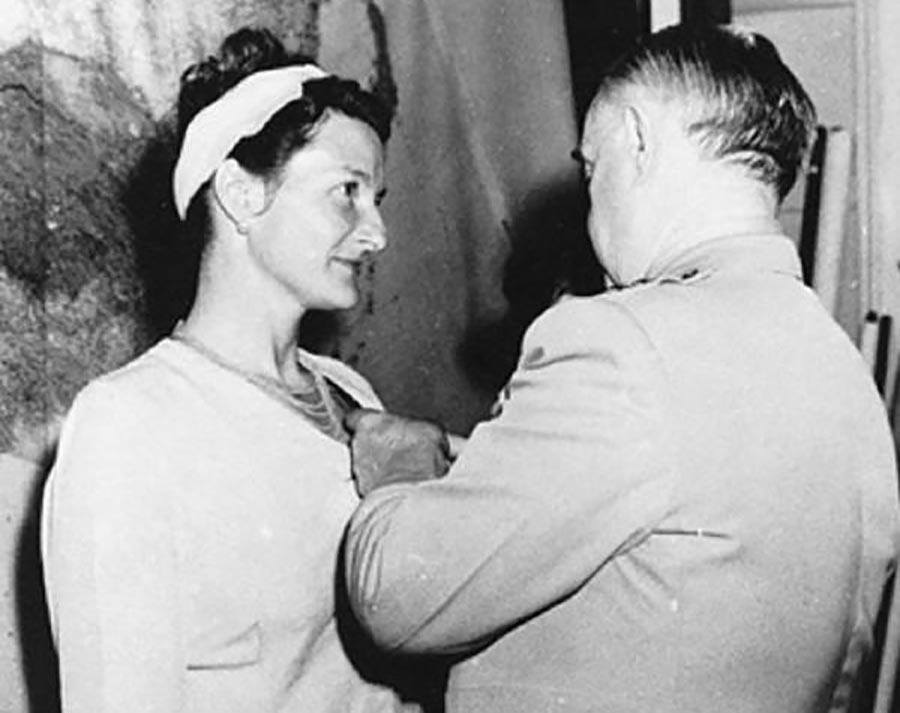
It was once a Nazi imperative to find the unknown “woman with a limp.” In the words of the Gestapo, this woman was “the most dangerous of all Allied spies. We must find and destroy her.”
The Gestapo spoke of Virginia Hall. Baltimore-born Hall became the first female operative of Britain’s Special Operations Executive to be sent into France, where she worked in the country as a spy for three years.
When the * flooded the country, Hall was forced to escape on foot through the Pyrenees Mountains into Spain, a monumental task for anyone – but even more amazing for a woman who had lost a leg years before in a hunting accident.
Hall, using a prosthetic leg which she had nicknamed “Cuthbert,” trekked through the frozen landscape and sent a message to SOE headquarters explaining that she was having difficulty with her artificial limb. The reply: “If Cuthbert is giving you difficulty, have him eliminated.”
When she arrived in Spain, Hall was initially imprisoned for not having valid entry papers. Upon her release six weeks later, Hall worked as an undercover correspondent in Madrid for the Chicago Times, before eventually joining the Office of Strategic Services.
At her request, Hall was sent back into occupied France where she worked as a wireless radio operator, reporting the movements of German troops and organizing supply and arms drops. To avoid detection, she remained on the move – staying in attics or barns. Hall disguised herself as an elderly milkmaid in order to make her way through the French streets, shuffling her feet to disguise the limp that all SS soldiers were on the lookout for.
In recognition of her courage, Hall was awarded the Army’s Distinguished Service Cross — the only civilian woman to have earned one. She joined the CIA in 1951, working as an intelligence analyst. Hall retired in 1966.
More here: https://en.wikipedia.org/wiki/Virginia_Hall
There was a documentary the other week about Virgina Hall (among others); she apparently dealt far greater damage than what's usually reported. Crazy to think that a single person can make such an impact.
Ruby Bradley
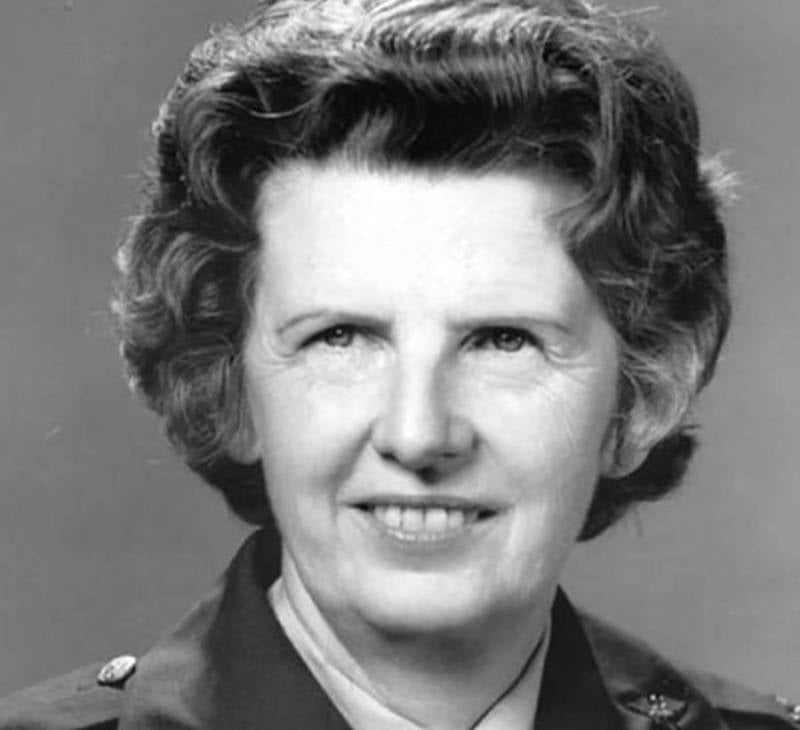
While she only “[wanted] to be remembered as just an Army nurse,” Ruby Bradley was so much more than that. Bradley, a surgical nurse who served at Camp John Hay, was captured three weeks after the attack on Pearl Harbor and became a prisoner of war at the Santo Tomas Internment Camp in Manila.
At the POW camp, Bradley was regarded as an “angel in fatigues,” giving medical care to her fellow captives and saving some of her food for others struggling. “I’d save part of my food for the children later in the day, when they started crying and being hungry,” she said.
Bradley was held for 37 months, all the while performing over 230 surgeries and assisting in childbirths under the camp’s inadequate conditions – and smuggling in food and medical supplies. Bradley weighed only 80 lbs. when she was finally liberated from the camp in 1945.
Her experience at the camp did not deter her from future service: Just five years later, Bradley stood at the front lines in the Korean War, working as chief nurse at an evacuation hospital.
Even when surrounded by 100,000 Chinese soldiers, Bradley refused to abandon the facility until all injured persons were loaded onto a plane. “You got to get out in a hurry when you have somebody behind you with a gun,” Bradley said. She was the last one on the plane – right before her ambulance exploded from the hit of an enemy shell.
Leaving Korea in 1953, Bradley received a full-dress honor guard ceremony – the first woman ever to be bestowed this honor, nationally or internationally. After three decades of service, dozens of medals, and being only the third woman to achieve the rank of colonel, Ruby Bradley retired from the military in 1963. Even after her retirement, she worked as a supervisor in a private duty nursing service.
More here:
Susan Travers
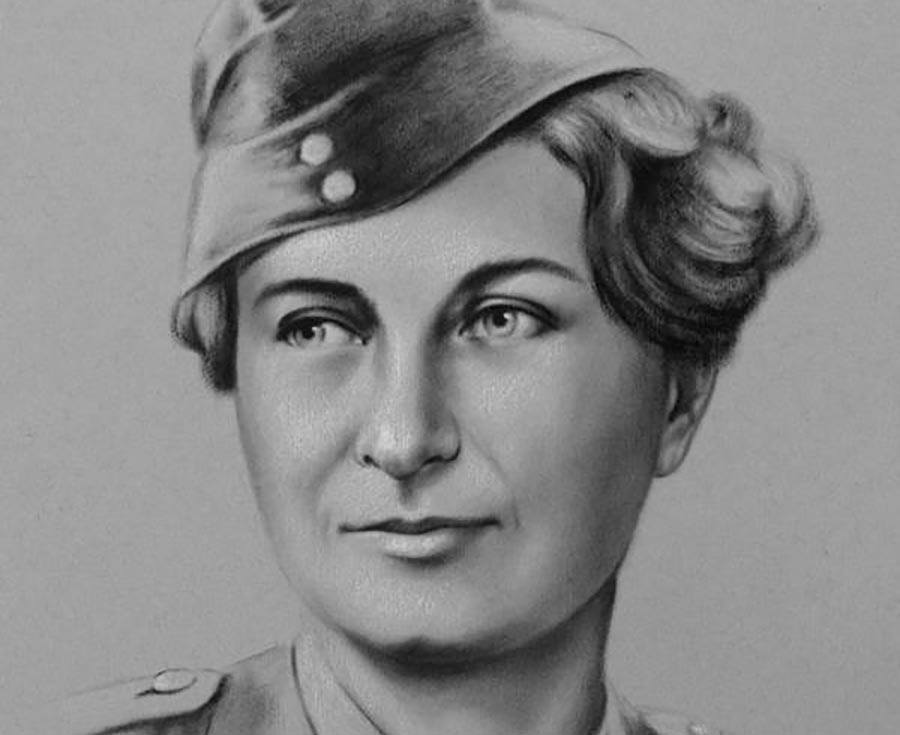
When German troops surrounded the Bir Hakeim fort in Libya, Britain-born Susan Travers – the daughter of a Royal Navy admiral – refused to leave with the other female personnel. The only woman in the French Foreign Legion, she held out inside the fort with the other soldiers for 15 days in an attempt to withstand the heavy artillery of the Germans.
When food and supplies ran out, Travers and her lover General Marie-Pierre Kœnig knew that no help was coming, and it was up to them to save those who remained. And so they decided to make a run for it.
With Travers driving the lead truck, the remaining Free French soldiers made a daring escape. The Germans were none the wiser – until one of the trucks struck a landmine and exploded. When Kœnig told Travers “If we go, the rest will follow,” Travers hit the gas and darted their vehicle through the desert under heavy fire.
Her lead vehicle would take 11 bullets in total, but would make it to the border – along with the 2,500 Free French soldiers that she helped save. Travers went on to drive a “self-propelled anti-tank gun” in France, and became an official member of the Legion by leaving her gender off the application.
Travers was the recipient of the Legion d’Honneur, the Medaille Militaire, and the Croix de Guerre, all very high honors in the French Military. Of her desert dash? “My main concern was that the engine would stall,” Travers said. “It is a delightful feeling, going as fast as you can in the dark.”
Little more here : https://en.wikipedia.org/wiki/Susan_Travers
“Simone Segouin, mostly known by her codename, Nicole Minet, was only 18 when the Germans invaded. Her first act of rebellion was to steal a bicycle from a German military administration, slicing the tires of all of the other bikes and motorcycles so they couldn't pursue her. She found a pocket of the Resistance and joined the fight, using the stolen bike to deliver messages between Resistance groups.
She was an extremely fast learner and quickly became an expert at tactics and explosives. She led teams of Resistance fighters to capture German troops, set traps, and sabotage German equipment. As the war dragged on, her deeds escalated to derailing German trains, blocking roads, and blowing up bridges, helping to create a German-free path to help the Allied forces retake France from the inside. She was never caught.
Segouin was present at the liberation of Chartres on August 23, 1944, and then the liberation of Paris two days later. She was promoted to lieutenant and awarded several medals, including the Croix de Guerre.
After the war, she studied medicine and became a pediatric nurse. She is still going strong, and this October (2020) will turn 95.”
I've thrown a before and after photo together, enjoy this absolute legend 🙂
You are speeder than me i just want to post it this morning 😉.
Freddie Oversteegen

Freddie Oversteegen was only 14, petite with long braids, when she became an assassin and saboteur.
It was 1940, Germany had invaded the Netherlands, and she and her sister, Truus, who was two years older, had been recruited by the local Dutch resistance commander, in the city of Haarlem.
“Only later did he tell us what we’d actually have to do: Sabotage bridges and railway lines recalled in a 2014 book, “Under Fire: Women and World War II.” “We told him we’d like to do that.”
Then the commander added, “ ‘And learn to shoot — to shoot *,’ ” she said.
“I remember my sister saying, ‘Well, that’s something I’ve never done before!’ ”
The sisters, along with a lapsed law student, Hannie Schaft, became a singular female underground squad, part of a cell of seven, that killed collaborators and occupying troops.
The three staged drive-by shootings from their bicycles; seductively lured German soldiers from bars to nearby woods, where they would execute them; and sheltered fleeing Jews, political dissidents, gay people and others who were being hunted by the invaders.
Freddie Dekker-Oversteegen, the last surviving member of the trio, died on Sept. 5, the day before her 93rd birthday, at a nursing home in Driehuis in the Netherlands, about five miles from where she was born.
Freddie Oversteegen was only 14, petite with long braids, when she became an assassin and saboteur.
It was 1940, Germany had invaded the Netherlands, and she and her sister, Truus, who was two years older, had been recruited by the local Dutch resistance commander, in the city of Haarlem.
“Only later did he tell us what we’d actually have to do: Sabotage bridges and railway lines,” Truus Menger-Oversteegen recalled in a 2014 book, “Under Fire: Women and World War II.” “We told him we’d like to do that.”
Then the commander added, “ ‘And learn to shoot — to shoot *,’ ” she said.
“I remember my sister saying, ‘Well, that’s something I’ve never done before!’ ”
The sisters, along with a lapsed law student, Hannie Schaft, became a singular female underground squad, part of a cell of seven, that killed collaborators and occupying troops.
The three staged drive-by shootings from their bicycles; seductively lured German soldiers from bars to nearby woods, where they would execute them; and sheltered fleeing Jews, political dissidents, gay people and others who were being hunted by the invaders.
Freddie Dekker-Oversteegen, the last surviving member of the trio, died on Sept. 5, the day before her 93rd birthday, at a nursing home in Driehuis in the Netherlands, about five miles from where she was born.
Freddie Oversteegen said she had felt sidelined after the war, in part because she had been a member of a Communist youth group; the Dutch government was soundly anti-Soviet.

Of the three young women, she was the most reserved, even though she was the first of them to fatally shoot a German soldier. (He had been lured from a bar into the woods.) Asked in 2016 by the online magazine Vice Netherlands how she had later dealt with her participating in wartime brutality, she replied, “By getting married and having babies.”
She also said that until she and Truus were profiled in a 2016 television documentary in the Netherlands titled “Two Sisters in the Resistance,” she had been envious of her sister. By then, Truus had become a well-known author.
“I have always been a little jealous of her because she got so much attention after the war,” she said of Truus. “But then I’d just think, ‘I was in the resistance as well.’ ”
In 2014, both sisters were awarded the Mobilization War Cross by Mark Rutte, the Dutch prime minister.
Ms. Oversteegen married Jan Dekker, an engineer for the Dutch steel producer Koninklijke Hoogovens. She is survived by their three children, four grandchildren and a stepbrother from her mother’s second marriage.
Freddie Nanda Oversteegen was born on Sept. 6, 1925, in Schoten, a village in the province of North Holland, to Jacob Oversteegen and Trijntje van der Molen. (Schoten is now part of Haarlem.)
Her parents were members of International Red Aid, a social service group organized by the Communist International. Freddie and her sister joined the Dutch Youth Federation, another Communist affiliate, and made dolls for children caught up in the Spanish Civil War.
After their parents divorced, amicably (Jacob sang a farewell serenade in French), the girls moved with their mother into a small North Holland apartment, where the sisters shared a bunk. As early as the mid-1930s, the family took in Jews fleeing from Germany.
After the Germans invaded, Jews were hidden elsewhere because the Oversteegens feared that their Communist leanings might invite exposure. Many were discovered nevertheless.
“They were all deported and murdered,” Ms. Oversteegen was quoted as telling the anthropologist Ellis Jonker in “Under Fire: Women and World War II.” “We never heard from them again. It still moves me dreadfully, whenever I talk about it.”
The sisters worked as nurses in Enschede, on the German border in eastern Holland, where they could surreptitiously report on a German military airport. They also distributed leaflets and anti-Nazi posters.
Their anti-Nazi activities brought them to the attention of Frans van der Wiel, the Dutch underground leader in Haarlem, who visited them and, with their mother’s blessing, persuaded them to join the Council of Resistance. Their mother gave them only one rule, Ms. Oversteegen said: “Always stay human.”
Retaining their humanity became more challenging once the sisters joined the seven-member underground cell based in Haarlem (they and Ms. Schaft were the only women) and learned that their job would entail blowing up bridges and railway tracks — and murder.
“Yes, I’ve shot a gun myself and I’ve seen them fall,” Freddie Oversteegen told a TV interviewer. “And what is inside us at such a moment? You want to help them get up.”
Still, she justified killing collaborators, who had betrayed her neighbors, and foreign soldiers, who had invaded and occupied her country.
“We had to do it,” she said. “It was a necessary evil.”
Ms. Oversteegen also rebutted criticism that the resistance had provoked German retaliation against innocent civilians.
“What about the six million Jews?” she said. “Weren’t they innocent people? Killing them was no act of reprisal. We were no terrorists. The real act of terror was the kidnapping and execution of innocent people after the resistance acted.”
The three women drew the line once, though, according to Kathryn J. Atwood’s book “Women Heroes of World War II: 26 Stories of Espionage, Sabotage, Resistance, and Rescue” (2011).
They had been ordered to kidnap the children of the politician and senior Nazi officer Arthur Seyss-Inquart, reichkommissar of the occupied Netherlands. The plan was to swap the children for imprisoned members of the Dutch underground. The three refused because the children could have been killed if the exchange went awry.
“We are no Hitlerites,” Ms. Schaft was quoted as saying in the book. “Resistance fighters don’t murder children.”
Hedy Lamarr
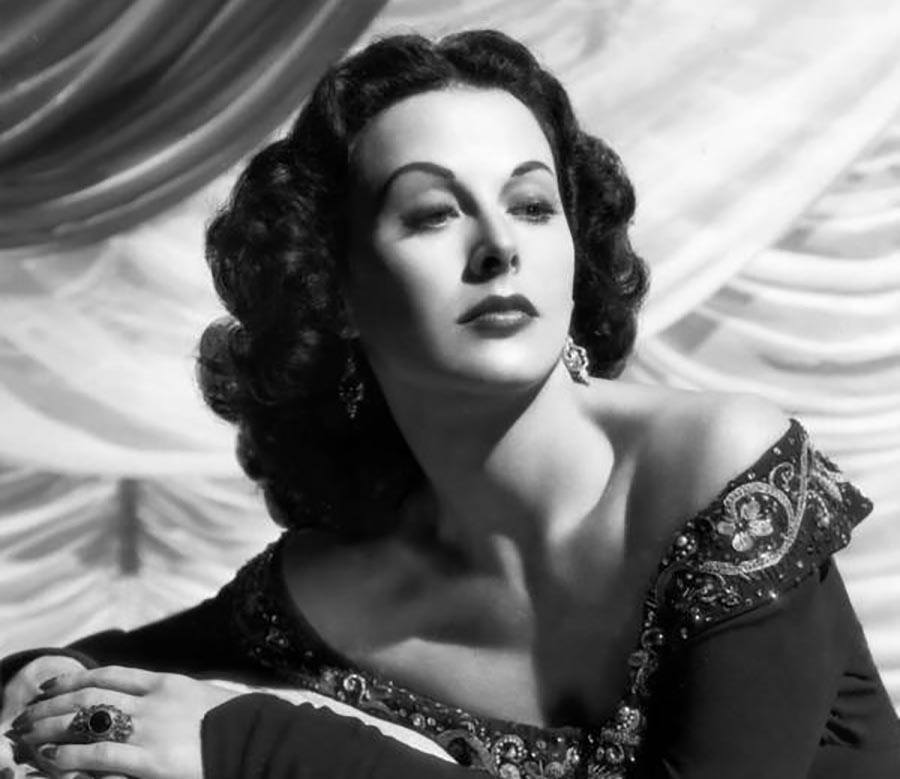
A Hollywood starlet from the 1930s until the 1950s, Hedy Lamarr was known as “the most beautiful woman in Europe” – but her looks and acting skills were far from the defining aspects of her life.
When not acting, the Austrian immigrant dabbled in tech. During the early stages of WWII, Lamarr and composer George Antheil created a radio guidance system for Allied torpedoes.
“She understood that the problem with radio signals was that they could be jammed,” Lamarr’s biographer, Richard Rhodes, wrote. “But if you could make the signal hop around more or less randomly from radio frequency to radio frequency, then the person at the other end trying to jam the signal won’t know where it is.”
Lamarr and Antheil successfully developed a means to prevent the jamming of torpedoes’ frequency hopping – along with spread spectrum technology. The invention — which would lead to the development of Wi-Fi, Bluetooth, and guided missile systems — was patented in 1941, but the Navy did not put their invention to use until the 1960s during the Cuban Missile Crisis.
Hedy Lamarr was honored in 1997 by the Electronic Frontier Foundation Pioneer Award, a BULBIE (basically the Oscars of inventing) and was posthumously inducted into the National Inventors Hall of Fame in 2014.
Noor Inayat Khan
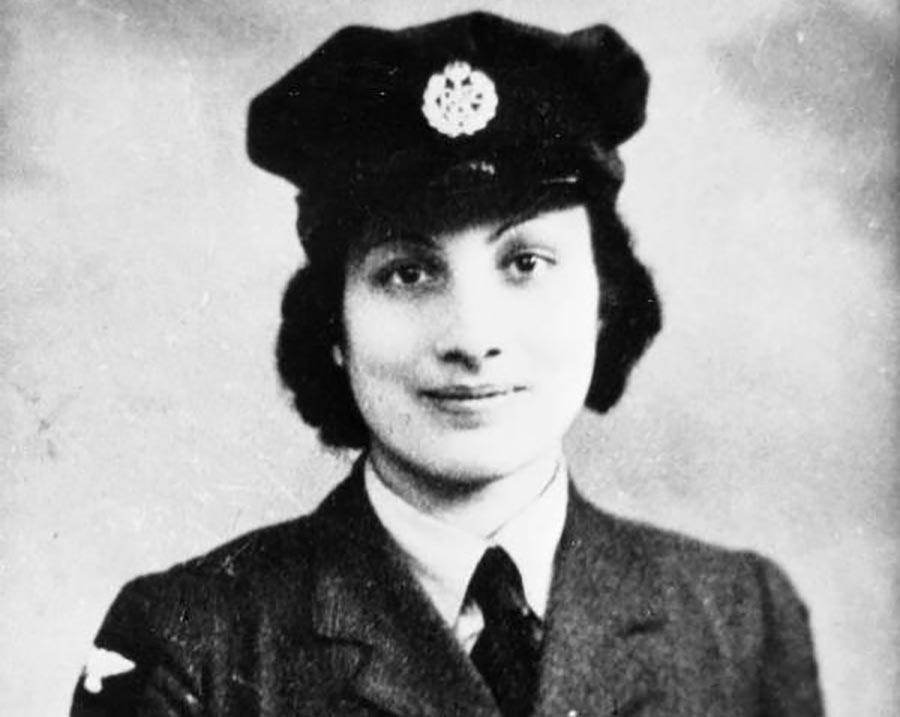
When war broke out in 1939, the descendant of Indian royalty Noor Inayat Khan trained as a nurse with the French Red Cross. Quiet and unassuming, Khan was passionate about her father’s pacifist teachings – so it was a surprise to some when Khan joined the Women’s Auxiliary Air Force after escaping to England during the German occupation of France. There, she was trained as a wireless radio operator.
Shortly after, Khan was recruited into the Special Operations Executive for service in Nazi-occupied France. Some doubted her suitability for the job, but her fluent French and the shortage of agents had her flying to Paris as a radio operator for the resistance network, under the code name “Madeleine.”
After the arrest of many in the Paris resistance, Khan continued to move around undercover, sending messages back to London HQ. In October 1943 she was betrayed and arrested by the Gestapo. She managed to escape for a few hours, but upon her recapture she was sent to solitary confinement at Pforzheim prison in Germany. She was held in chains and tortured, but never revealed any information about the resistance.
From the German prison, Khan was sent to Dachau Concentration Camp where she was brutally beaten and possibly sexually assaulted. When she still revealed no secrets, the young Muslim woman was shot execution-style in the back of the head. Her last word as the firing squad took aim was “Liberté.”
Noor Inayat Khan was posthumously awarded the George Cross for courage in 1949, and the French military decoration, the Croix de guerre, or Cross of War.
An other form of fight in WWII 🙂.
Women's Land Army

The Women's Land Army (WLA) was a British civilian organisation created during World War II so women could work in agriculture, reviving a disbanded World War One organisation and replacing men called up to the military. Women who worked for the WLA were commonly known as Land Girls. In effect the Land Army operated to place women with farms that needed workers, the farmers being their employers. They picked crops and did all the jobs that the men would do. Notable members include Joan Quennell, later a Member of Parliament.
As the prospect of war became increasingly likely, the government wanted to increase the amount of food grown within Britain. In order to grow more food, more help was needed on the farms and so the government started the Women's Land Army in June 1939. Though under the Ministry of Agriculture and Fisheries, it was given an honorary head – Lady Denman. At first it asked for volunteers. This was supplemented by conscription, so that by 1944 it had over 80,000 members. The WLA lasted until its official disbandment on 21 October 1949.

The majority of the Land Girls already lived in the countryside but more than a third came from London and the industrial cities of the north of England. A separate branch was set up in 1942 for forestry industry work, officially known as the Women's Timber Corps and with its members colloquially known as "Lumber Jills" - this was disbanded in 1946.
In December 2007, following campaigning by former Land Girl Hilda Gibson, the Department for Environment, Food and Rural Affairs (DEFRA) announced that the efforts of the Women's Land Army and the Women's Timber Corps would be formally recognised with the presentation of a specially designed commemorative badge to the surviving members. The badge of honour was awarded in July 2008 to over 45,000 former Land Girls.
In October 2012, the Prince of Wales unveiled the first memorial to the WLA of both World Wars, on the Fochabers estate in Moray, Scotland. The sculpture was designed by Peter Naylor. In October 2014, a memorial statue to the Women's Timber Corps and both incarnations of the Women's Land Army was unveiled at the National Memorial Arboretum in Staffordshire, England.